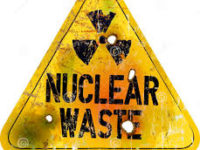http://www.mydailyinformer.com/michio-kaku-fukushima-the-end-of-humanity/
We know it’s bad – but how bad?
 10 days ago from this writing, the sardine fishery of British Columbia, Canada was reported to have “inexplicably” collapsed. Simply no sardines were caught and the fleet went home, empty-handed. Starfish and seal populations in that region are also collapsing.
10 days ago from this writing, the sardine fishery of British Columbia, Canada was reported to have “inexplicably” collapsed. Simply no sardines were caught and the fleet went home, empty-handed. Starfish and seal populations in that region are also collapsing.
We’ve heard now about three complete meltdowns that are occurring at the afflicted power plant at Fukushima – but we’ve never heard about the fact that there are actually 6 reactors at the site! We know that this week, 2 separate typhoons (the term for hurricanes in the western Pacific) will be colliding exactly over Fukushima this week, all the better to disperse the unfathomable tonnage of hot particles into the Pacific Ocean Basin, set to do further ruin to the already-collapsing ecosystems throughout this immense area.
Were there to be a fire spread, due to the hundreds of unsecured nuclear fuel rods at the plant today, a chain reaction could occur and “The Northern Hemisphere could easily be facing an extreme fallout situation, where everybody would have to shelter indoors for several months or more,” according to Christina Consolo, Founder of Nuked Radio.
When interviewed by Russia Today, Consolo’s assessment was that the worst case scenario could play out into the deaths of “billions of people. A true apocalypse.”
Expert: Plutonium-241 from Fukushima nearly 70,000 times more than atomic bomb fallout in Japan — Gov’t Labs: Large areas of oceans contaminated by plutonium from events such as Fukushima; Build-up in biosphere expected; Considerable hazard to humans — Officials: Molten fuel now ‘particle-like’, contains ‘special’ nuclear materials.
The attempted cover up of the severity of the Fukushima disaster is nothing new. Governments have been covering up nuclear meltdowns for 50 years, and the basic design for nuclear reactors was not chosen for safety, but because it worked on Navy submarines … and produced plutonium for the military.
Nuclear Expert: We found ‘mystery’ Fukushima plutonium; Why it’s there is yet to be understood, this was not expected — US Gov’t Expert: I don’t want to go down the rabbit hole too far… There’s speculation about plutonium fuel and about what other fuel they were using.
(Indeed, the government’s response to every crisis appears to be to try to cover it up; and see this.)
Today, Yomiuri Shinbun reports (Google translation) that the U.S. knew within days that Fukushima had melted down:
The US … already knew about the unusually high temperature of the reactors from the Global Hawk data, and determined that “the fuel has already melted”.
The US high-ranking officials wanted to evacuate the US citizens [Tokyo] but the local officials including Maher objected, as “it would severely undermine the US-Japan alliance”
In this article by Green Road Journal, they claim that the mass media, for the most part, is reporting a pro nuclear industry view. After, they say, six years of research, the authors put forward their pessimistic view:
Fukushima has released 257 Tons Of Heavy Metal Radioactive Poisons; 429 Lethal Radiation Doses Chasing Each Person on the Planet (Dr. Paolo Scamp), and that it is 12,000 times worse than Chernobyl.Mass die offs in ocean started in 2011, but the situation is getting worse.
Some believe Tokyo is not safe to live in, and should be evacuated, and that the radiation is bioconcentrating up the food chain to humans.
There is an increase in frequency of mutations, being found in trees, insects, plants, birds, animals — and the entire western coastline of Pacific ocean is basically sterilized, with few species remaining.
The company has admitted that it did not act properly during the disaster, confessing in February that it announced the nuclear meltdowns far too late. It also stated in a 2012 report that it downplayed safety risks caused by the incident, out of fear that additional measures would lead to a shutdown of the plant and further fuel public anxiety and anti-nuclear campaigns.
Despite the ongoing problems encountered following the meltdowns, TEPCO has set 2020 as the goal for ending the plant’s water problem – an aim which critics say is far too optimistic. The problem of water contamination is just one of many surrounding the dismantling and containing of the Fukushima plant debris which is estimated to take at least 40 years
